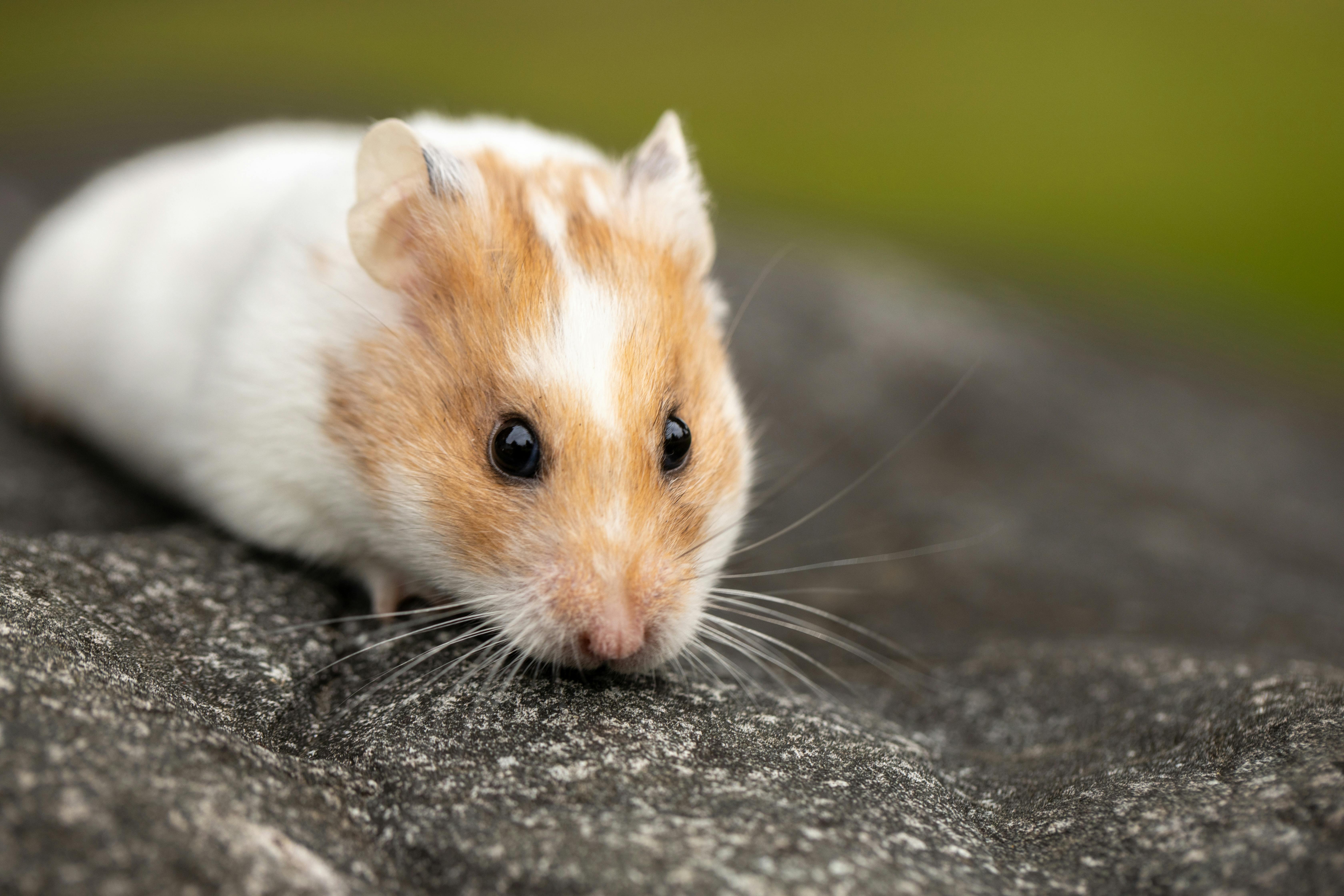Essential Guide to Winter White Dwarf Hamster Care for 2025 - Discover the Best Practices!
Winter White Dwarf Hamsters are cherished pets known for their playful personalities and striking beauty. As we step into 2025, providing the best care for these adorable creatures becomes paramount for every owner. Understanding their specific needs is essential for ensuring their well-being and fostering a loving bond.
In this comprehensive guide, we will explore various aspects of winter white dwarf hamster care, from their habitat and diet to their social behavior and health issues. Whether you're a first-time owner or a seasoned enthusiast, our insights will equip you with the knowledge to nurture these small mammals. Expect to discover expert advice on their size, temperament, exercise needs, grooming, and more. Let’s dive in and understand the fundamentals of caring for your winter white dwarf hamster!

Understanding Winter White Dwarf Hamster Characteristics
Building on the importance of care, understanding the characteristics of winter white dwarf hamsters sets a strong foundation for successful ownership. These little rodents typically have a compact size that ranges from 3 to 4 inches, making them perfect companions for families and children. Their distinct coloration usually transitions with the seasons, showcasing a beautiful white coat during winter, hence the name.
Winter White Dwarf Hamster Size
Winter white dwarf hamsters generally weigh around 1.5 to 2.5 ounces, making them one of the smaller breeds in the hamster family. Their petite size allows them to thrive in various housing setups, provided it meets their environmental needs such as space, temperature, and safety.
Winter White Dwarf Hamster Temperament
These hamsters are known for their friendly and gentle demeanor, making them ideal for families and children. Their sociable nature encourages interaction, allowing owners to bond easily. However, some individuals may exhibit shyer traits, necessitating patience and gentle handling to nurture trust.
Common Health Issues in Winter White Dwarf Hamsters
Awareness of potential health issues is critical in the care of winter white dwarf hamsters. Some common conditions include diabetes, wet tail, and respiratory infections. Regular check-ups with an experienced veterinarian can help detect and address these health challenges promptly.
Fun Facts about Winter White Dwarf Hamsters
Did you know that winter white dwarf hamsters can change their fur color based on the season? Besides their adaptability to colder climates, they can also display various colors from gray to white, with subtle variations depending on the individual. Understanding these traits adds to the joy of having one as a pet.
With a thorough understanding of their characteristics, let's delve into the essential elements of creating a suitable environment for your winter white dwarf hamster.
Creating an Ideal Habitat for Your Winter White Dwarf Hamster
Having established the foundational characteristics of the winter white dwarf hamster, the next step is to ensure they reside in a conducive habitat. A well-designed habitat can significantly enhance their comfort and overall well-being.
Choosing the Right Cage for Winter White Dwarf Hamsters
When selecting a cage for your hamster, consider its size and design. A habitat with ample space, around 24 inches by 12 inches, can keep your pet active and healthy. Look for options that allow proper ventilation, space for climbing, and are easily cleaned.
Winter White Dwarf Hamster Bedding Options
Proper bedding is essential in creating a comfortable environment for your hamster. Materials like aspen shavings and paper-based bedding are excellent choices due to their absorbency and softness. Ensure the bedding is free from harmful chemicals or dust, which can affect your pet’s health.
Lighting for Winter White Dwarf Hamster Habitat
Proper lighting is crucial for maintaining your hamster's circadian rhythm. An appropriate light schedule mimicking natural daylight helps in promoting healthy behaviors and sleep cycles. Avoid exposing them to direct sunlight, as this can stress them out and lead to overheating.
Winter White Dwarf Hamster Temperature Requirements
Maintaining a suitable temperature is vital for their well-being. Ideally, their habitat should be kept between 65°F and 75°F. Extreme temperatures should be avoided, as both heat and cold can cause stress and health issues.

After setting up a safe and comfortable habitat, it's essential to address their dietary needs. Understanding how to properly feed your winter white dwarf hamster will ensure a long and healthy life.
Feeding Your Winter White Dwarf Hamster: Essential Nutritional Guidelines
With their habitat secured, let's explore the dietary needs that are crucial for optimal health. Proper nutrition plays a significant role in supporting their growth, energy levels, and overall longevity.
Winter White Dwarf Hamster Diet
The diet of a winter white dwarf hamster should primarily consist of high-quality hamster pellets supplemented with fresh vegetables and occasional treats. Ensure that they receive a balanced diet to prevent obesity and related health issues.
Safe Treats for Winter White Dwarf Hamsters
When selecting treats, opt for options such as small pieces of apple, carrot, or commercial hamster treats that are specifically formulated. Avoid sugary or fatty foods, which can lead to diabetes or other health problems.
Signs of Illness in Winter White Dwarf Hamsters
Being vigilant for any signs of illness in your hamster is crucial. Look for changes in their behavior, eating habits, or physical appearance. If you notice anything unusual, seek veterinary care immediately.
Winter White Dwarf Hamster Nutrition Guidelines
Always review nutritional content and avoid overfeeding. Keep their food fresh and water clean to encourage the best dietary practices. Monitor their weight by checking regularly to ensure they remain healthy.
Having discussed their diet, the next integral aspect is grooming and hygiene, which will keep your hamster happy and healthy.
Grooming and Hygiene Practices for Winter White Dwarf Hamsters
Good grooming practices contribute significantly to your hamster's comfort. Addressing their grooming needs is essential for maintenance and hygiene.
Winter White Dwarf Hamster Grooming Tips
Regular grooming helps to prevent matting and skin issues. Brush your hamster gently with a small pet brush to remove loose fur and dirt. This not only keeps their coat clean but also gives you an opportunity to check for skin irritations.
Health Monitoring for Winter White Dwarf Hamsters
During grooming sessions, closely examine your hamster for any unusual lumps, bumps, or irritation. Monitor their overall behavior and habits to detect any changes that could indicate potential health problems.
Winter White Dwarf Hamster Bathing Techniques
Unlike many pets, hamsters should not be bathed frequently. They are generally good at keeping themselves clean. However, if necessary, a dry bath using special hamster-safe sand or powder can be utilized.
Common Misconceptions About Winter White Dwarf Hamsters
Many believe that hamsters don’t require grooming, but this is not the case. Regular grooming is essential for their health and improves the bond between pet and owner.
Now that we have covered grooming, let’s transition to understanding their social behavior and interaction needs, which are vital for a happy hamster.
Socialization and Interaction with Winter White Dwarf Hamsters
Understanding the social dynamics of winter white dwarf hamsters can enhance your connection with your pet. Their interaction habits significantly impact their emotional well-being and behavior.
Interacting with Your Winter White Dwarf Hamster
Engaging with your hamster regularly fosters a strong bond. Spend time every day interacting and observing them to understand their unique personality better. Providing time outside the cage for supervised play can also enhance their exercise routine.
Tips for Winter White Dwarf Hamster Owners
Creating a secure space for playtime is essential. Use hamster playpens or designated areas that allow them to explore safely. Avoid clutter and hazards to minimize risk during these activities.
Winter White Dwarf Hamster Behavior Basics
Understanding common behaviors can improve your relationship with your hamster. The most notable signs of discomfort include hiding, non-active behavior, or excessive chewing of the cage bars. Recognizing these signals early can ensure a happy and healthy pet.
Training Your Winter White Dwarf Hamster
Training may involve simple commands and tricks, which can further enhance bonding. Utilize positive reinforcement to teach basic commands gently. For instance, encouraging your hamster to respond to their name can create a more engaging experience.
Finally, after the entire process of socialization and interaction, it’s crucial to know the common health concerns associated with winter white dwarf hamsters to ensure their longevity.
Health Care and Management for Winter White Dwarf Hamsters
As a responsible pet owner, being knowledgeable about health care is imperative. Regular health management is essential for preventing diseases and enhancing your hamster's quality of life.
Common Health Issues in Winter White Dwarf Hamsters
Being aware of potential health issues such as diabetes, wet tail, and respiratory infections can help in early detection. Regular veterinary check-ups are critical to identifying and addressing these problems promptly.
Understanding Winter White Dwarf Hamster Diseases
Educate yourself on common diseases associated with dwarf hamsters. Understanding the symptoms and treatments will allow you to provide the best care possible. Wet tail, for instance, is a serious condition that requires immediate veterinary attention.
Assessing Your Hamster's Health Needs
Regularly assess your hamster’s weight and behavior to determine their health status. If you notice sudden changes in their food intake, activity level, or appearance, consult a veterinarian for professional advice and care.
Winter White Dwarf Hamster Lifespan and Care
Understanding their lifespan, which typically ranges from 2 to 3 years, emphasizes the importance of quality care. Ensuring your hamster receives proper nutrition, social interaction, and medical attention will help maximize their longevity.
With these insights, you’re well-equipped to offer the best care to your winter white dwarf hamster. By understanding their characteristics, habitat needs, diet, grooming practices, social behavior, and health care needs, you’ll create a loving and enriching environment for your furry friend.
Q&A Section: Common Questions About Winter White Dwarf Hamster Care
What should I include in my winter white dwarf hamster's diet?
A balanced diet mainly consists of high-quality hamster pellets, supplemented with fresh fruits and veggies. Treats should be given sparingly to maintain their health.
How can I encourage my winter white dwarf hamster to be more active?
Engage your hamster with toys and opportunities for supervised play outside their cage. Ensure they have a variety of enrichment tools to stimulate their curiosity.
What are the signs of a healthy winter white dwarf hamster?
A healthy hamster is alert, active, and has a shiny coat. Regular eating and drinking habits are also good indicators of health.
How often should I clean my hamster’s habitat?
Cleaning should be done weekly by removing bedding and waste. A deep clean of the habitat should occur monthly, ensuring hygiene and comfort.
Can winter white dwarf hamsters live alone?
While they can thrive alone, providing them toys and interaction regularly is crucial. Hamsters are social but may also prefer their space, so monitoring their behavior is key.
With proper knowledge, you can confidently provide a loving home for your winter white dwarf hamster. Happy pet owning!
